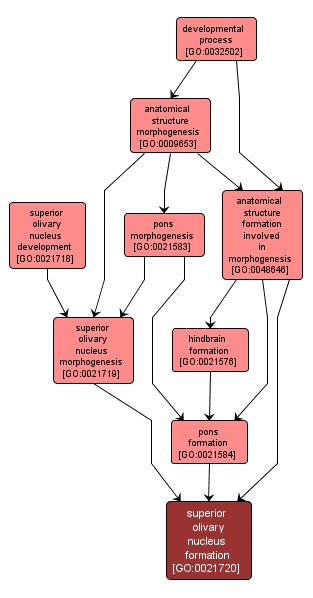| Desc: |
The process that gives rise to the superior olivary nucleus. This process pertains to the initial formation of a structure from unspecified parts. In mice, the superior olivary nucleus is a small cylindrical mass on the dorsal surface of the lateral part of the trapezoid body of the pons, and it is situated immediately above the inferior olivary nucleus. It receives projections from the cochlear nucleus and thus is involved in the perception of sound. |














